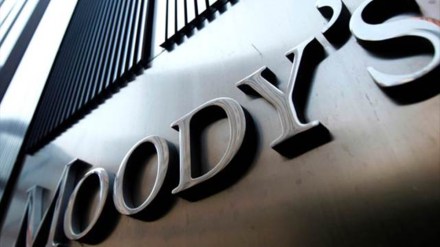India is better positioned than many other emerging markets to deal with US tariffs and global trade disruptions, helped by robust internal growth drivers, a sizable domestic economy and a low dependence on goods trade, Moody’s Ratings said on Wednesday.
Under the so-called reciprocal tariff scheme, India faced an additional tariff of 26% for goods exports to the US. On April 9, the US administration authorised a 90-day pause on the implementation of most tariffs, reverting to a universal rate of 10% on almost all targeted countries.
The direct trade impact on India is limited. Even though the US is the single largest export destination for Indian goods, the temporary relief provided by the pause and the smaller portion of goods exports in GDP compared to other emerging markets in Asia-Pacific limit the effects of tariffs on India’s growth, Moody’s said.
“We expect 10% universal tariffs and 30% tariffs on most Chinese goods exports to the US will constrain global growth, potentially reducing India’s economic growth in calendar year 2025 to 6.3% from 6.7%. Nonetheless, this growth rate will be the highest among G-20 economies,” it said.
Government initiatives to boost private consumption, expand manufacturing capacity and increase infrastructure spending will help offset the weakening outlook for global demand, Moody’s said.
The government has projected a capex of Rs 11.2 lakh crore in FY26 as against the FY25 revised estimate of Rs 10.18 lakh crore.
Easing inflation offers the potential for interest rate cuts to further support the economy, even as the banking sector’s liquidity facilitates lending, it said.
Pakistan-India tensions, including the flare-up earlier in May, would weigh on Pakistan’s growth more than on India’s, it said.
While the central government’s infrastructure spending supports GDP growth, it said personal income tax cuts bolster consumption.
In the FY26 budget, the Centre sharply raised the income tax exemption limit to Rs 12 lakh from Rs 7 lakh in the new tax regime, which the government said would leave around Rs 1 lakh crore cash in the hands of taxpayers. This will likely aid consumption and demand in the economy.
India’s limited reliance on the trade of goods and its robust service sector are mitigants to US tariffs. “India-made goods may even benefit from increased US demand if trade talks lead to lower tariffs on India compared to other emerging markets,” Moody’s said.
Despite global volatility, India’s sound banking market and stable credit conditions underscore its economic strength. Still, a deterioration in global economic and credit conditions would have knock-on effects, it said.
Strong demand for segments like power, transportation and digital infrastructure will continue to attract significant capital investments over next 5-7 years, it noted.
The effects of US tariffs will likely be muted for most infrastructure sub-sectors as they cater mostly to domestic demand and benefit from supportive regulatory or contractual arrangements, it added.
